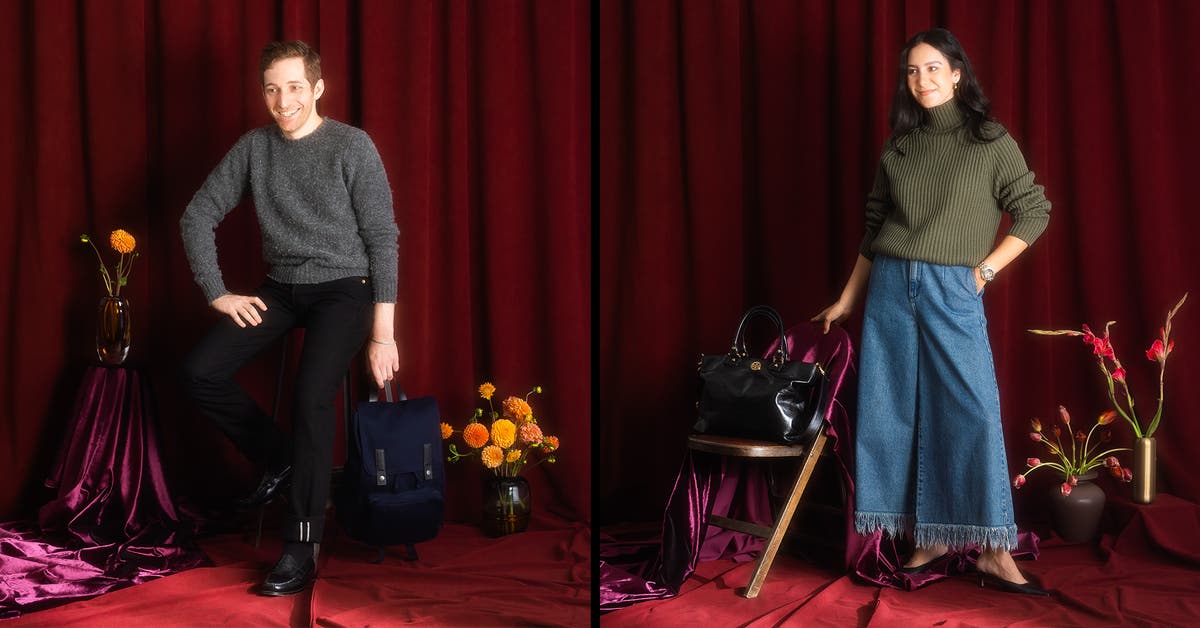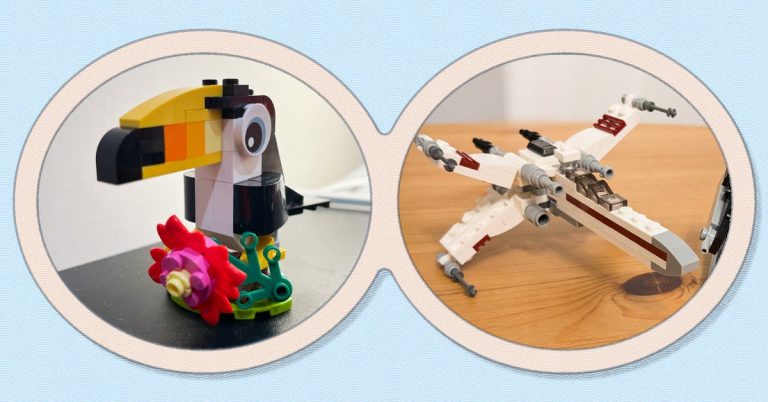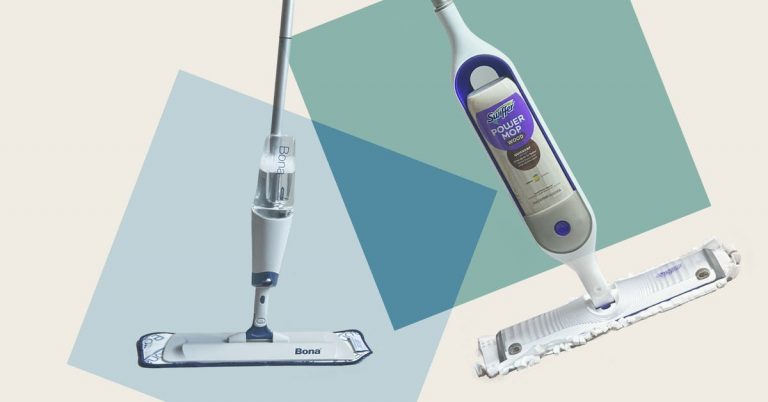How Two Style Experts Thrift a Versatile Look On a Budget
Where you should start your search depends on the type of item you’re sourcing. “If you’re looking for designer pieces, platforms like The RealReal, Rebag, and Fashionphile are your best go-tos,” says Frances. She’s a big fan of The RealReal, where she shops for vintage designer fashion; think it-bags of the 2010s, like Saint Laurent’s Sac du Jour, or heavily discounted Gucci loafers.
Alex prefers Grailed, which has a bit of a reputation for streetwear and is a platform where “sellers often list a lot of garment measurements, which makes it easier to know if something is going to fit well.”
Because The RealReal and Grailed deal in designer goods, they both offer authentication. This means they have in-house experts that confirm items are genuine, not fakes. But it also means that the stuff on offer might not be cheap, even if it’s less than it costs brand-new.
If you’re looking for everyday clothing, consider Poshmark, Depop, or even eBay. There, you’re more likely to find items from brands such as J.Crew, Uniqlo, or even Reformation, though you can still find unique pieces too. Your chances of getting a deal there are also higher. “Cynically, I love eBay because a lot of people are selling things they don’t really understand, so you’re more likely to get a good price on something,” says Alex. With these platforms, you’re also dealing directly with the seller, rather than with a third party.
Go down that rabbit hole with specific search terms
Shopping for clothing online is a rare instance where having a long list of requirements can actually pay off, and you shouldn’t shy away from using hyper-specific search terms. Alex knew he wanted a classic sweater with a weird finish, and his wish list included “something that has a lot of visual texture or a chunky Aran-like knit, made from 100% wool of a known origin, ideally a crewneck,” he says. “It also needs to come in with a length under 25 inches, because of my frame.”
With all of that in mind, he started entering super-specific search terms: “Shetland, Shaggy Dog sweater, Guernsey sweater, Jamiesons.” And it paid off.
“The sweater took all of 15 minutes to find on eBay,” he says. “It was about my fifth search. I was very lucky. A Shaggy Dog–style sweater came up in my size, with really specific garment measurements, and in gently used condition.”

It took Alex longer to find his jeans — about six hours — but his approach was nearly identical, because he was so clear on what he wanted, including the measurements, brand, and style. “I wanted a pair of jeans that I wouldn’t have to get altered, that I won’t have to figure out how to fit into my rotation, and that won’t require a lot of breaking in. That means something straight with a slight taper, like 501s or Madewell’s 1991 jeans,” though with a bit of a twist.
The terms that he used on eBay included “deadstock, NOS, NWT, NWOT, levis, vintage 501s, orange tab.” He ended up with a pair of Levi’s 501s in a hemp-cotton-blend selvedge that were actually new with tags. Though the style is pretty classic, the fabric makes them a little more “unusual,” he says, and they will “wear and fade differently than anything else I own and most 100% cotton jeans.”
Do your research on brand names
“Always look for labels. They can tell you a lot about the brand, quality, era, and past life of the garments,” says Frances. Doing that pre-work can also help you understand if you’re paying a fair price for the item (or even getting a deal). For example, Alex found dozens of Fjällräven bags for under $50, many of them with tags on. These were enticing, considering that they’re closer to $100 when new. But Alex ultimately abandoned them, largely because, being so popular, they lacked some of the novelty he was looking for.
Alex ended up with an older version of a backpack from Everlane that now retails for almost three times what he paid. He chose to look for an Everlane bag because “I knew that they used to make really discreet, thick canvas bags; I think backpacks, duffles, and T-shirts were some of their earliest core items. I had felt one of these bags at some point years ago, and the quality really jumped out at me. So when I started looking for a work-appropriate bag that wasn’t the standard sleek black nylon NYC commuter backpack, this one came to mind. I also knew that because it wasn’t a luxury designer, I could sneak in under budget.”
The bag is made from a high-quality cotton canvas that “will even require some breaking in,” he says. “All the finishes are high-quality leather and heavy metal. It’s a rucksack-style bag that feels more like an old L.L.Bean catalog-era purchase.”
Know your measurements
Both numerical sizing and letter sizing can vary enormously across brands, or even across different items from the same brand. You might be a small in one brand,but a medium or extra-small in another, so relying entirely on tagged sizes can be a recipe for disappointment.
When shopping online, you’ll have a much higher success rate if you start by measuring some well-fitting clothes you have at home and then comparing those numbers against the garment measurements in the item listing. If they aren’t specified, ask — most online sellers are happy to provide them.
Use filters to your advantage
If you’re a little less clear about your vision and are instead focused on getting a good price, you can rely on some curation from the sites themselves. The filters are another reason Frances likes The RealReal, as they help her navigate its massive inventory. “TRR has an ‘editor’s picks’ filter that I really like, because they’re usually investment-worthy, rare, or high-quality items.”

She also regularly relies on the saved-searches feature to track the prices and new inventory on brands and styles she’s on the hunt for. For this challenge, she set up a saved search using specific criteria: women’s bags, under $100, in black, and marked as “editor’s pick.”This helped her narrow down her options to see only those objects she would actually consider in her search — and it’s ultimately how she found her workbag, a Tory Burch leather tote with rolled top handles, and a list price over $400, being sold for $88.
Pay attention to photos
It’s common for listings of secondhand or vintage clothing to call out the condition, from as-is or fair to excellent or new with (or without) tags. But that’s only part of the story. “For online shopping, pay close attention to the condition listed, but also to the photos. Find a way to zoom in and really inspect the piece as much as you can,” says Frances. Alex agrees that the photos matter more than the listed condition: “Some sellers get a little generous with the phrase ‘lightly used.’ If something looks worn, but the seller says otherwise, it’s probably more on the worn-in end.”
When Frances looked at the listing for her Tory Burch bag, she noticed that “the leather did seem to have some wear, but it was listed on the site as being in ‘very good’ condition.” When she zoomed in, she didn’t see any major red flags. “There were no major scratches, rips, or stains. Besides the inevitable wrinkles, the bag looked new.”

It is possible for a seller to undersell the condition of an item too, which you can also suss out from carefully examining photos. “I recently bought a shirt that was listed as preowned, but I could still see creases in it from how it was packaged in the store,” says Alex. It was, in fact, essentially new, just without tags.






